Charged: Sougwen Chung
A conversation with the experimental artist who blurs the boundaries between light, sound, space and software
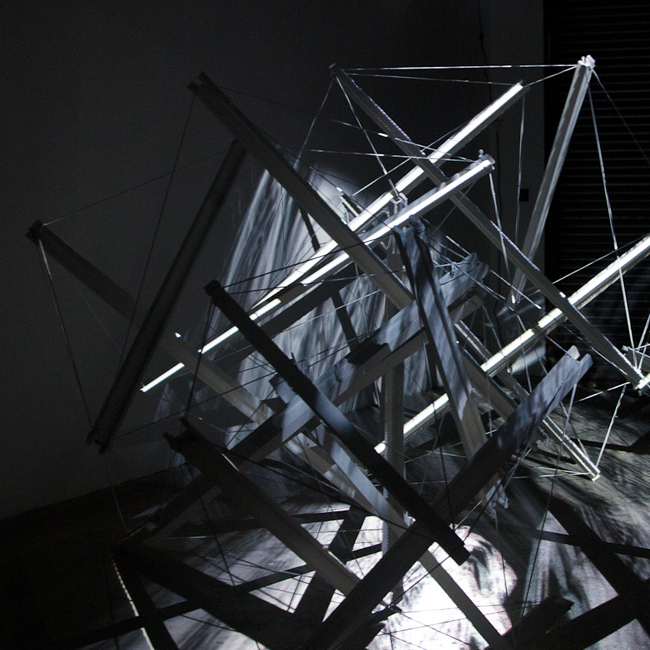
Sougwen Chung has always had an affinity for computers and digital technology. The artist had her first website at the age of ten—”an oddly personal site,” she recalls. In addition to the language of code, Chung is also conversant in music. Her father, an opera singer, made sure that his children had instruments in their hands at a very young age. Growing up in Toronto, Canada and Hong Kong (where her parents are from), Chung played both violin and piano. She moved to the States as a teenager, then crossed the Atlantic to study at the digital-focused experimental school Hyper Island in Stockholm, finally returning to New York as a budding artist.
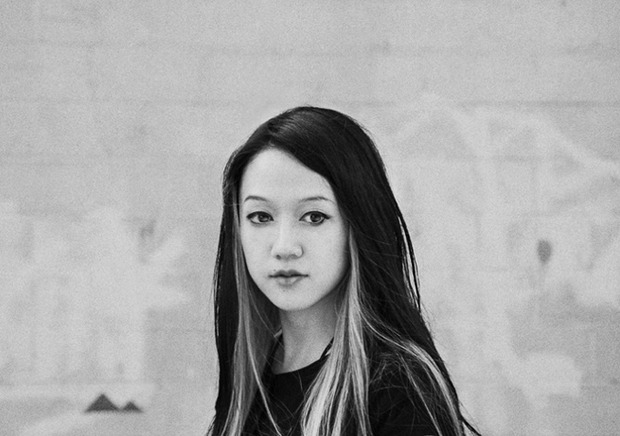
Chung’s unique background in both the arts and technology results in works that defy easy categorization while transcending genres. Wary of becoming too dependent on one interface or process, she continually strives to challenge herself by exploring “custom” creation tools for each new project. While Chung’s print series with Ghostly was featured on CH in the past, we wanted to delve deeper into her creative process. Over the past two years, she’s been branching into music, installation and sculpture, bringing her 2D drawings to life by manipulating sound, light, software and more. We chatted with the soft-spoken artist about her fervent dedication to documentation, performative architecture and her most recent installation, “Ecdysis.”
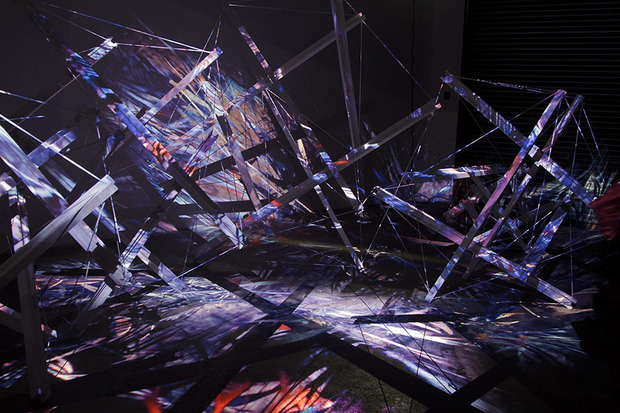
You’re just back from a SXSW talk. What did you discuss?
I did a panel on installation and projection—it was quite funny because the other speakers were incredibly technically and advertising-oriented, and so I was asked to bring an art perspective.
Working with new technology, I think a lot of people do get caught up with the software side of it, the algorithmic and process side of it. I tend to approach it from more of an intuitive, more artful perspective, I guess. But it’s weird, I’ve never had anyone sit me down and ask me to be that voice in the conversation. I know other artists who don’t enjoy doing talks, but I really enjoying doing it, because it’s a nice intellectual exercise to try to speak to what your work is as it’s evolving.

Let’s discuss the piece you’re currently working on, “Ecdysis.”
It’s a new installation I just did a private preview of at 319 Scholes [in Brooklyn]. It combines layers of pre-rendered graphics that I’ve done with a layer of light accents controlled by the electric violin. I’m thinking about using an instrument as a kind of a visual controller. I worked with the studio to design a patch that can read different pitch and velocity of the violin, and design and trigger different visuals based on that.
It’s a three projector set up on a 21-foot tensegrity sculpture. The structure was developed by Buckminster Fuller, whom I became obsessed with a few months ago. It’s kind of an algorithmic sculpture that’s actually held together by the tension of cord on rod. Generally [it’s] some sort of locking system or adhesive that adheres the two elements together to form a structure. But this is actually held together by tension of string in space.

How does a structure like this get built?
If origami is like a mathematical representation of structure on paper, then this is the same thing but for sculpture in a more 3-dimensional form. It’s fun because I do a lot of prototyping on my own in the studio, but I’ve been working with Square Fabrication and a touch designer programmer, Michelle Higa at Slanted Studios, as well was a technical director, Chris Lunney, to help me bring these larger pieces to life. The biggest one is about 10 feet high, so it’s actually sort of like making this gigantic crossbow. It’s kind of dangerous to some degree.
Do you have a picture of the sculpture?
Yes, I post a lot of stuff on my Instagram and Twitter. Here’s the sculpture; It’s a little bit hard to see because it’s deliberately concealed by darkness—but this is kind of a snapshot of the preview. Then the light is affected by the violin; so I’m playing with this idea of “performative architecture,” trying to create an immersive space that responds to the intuitive control of a violin or an instrument.
So that’s the new piece; I’m showing it at Communikey Festival—it will be the first time I’ll be performing it in front of an audience.
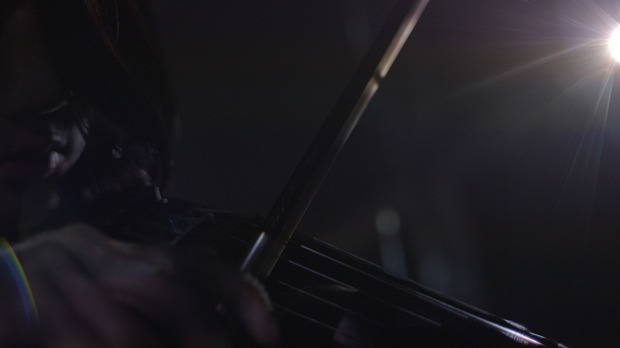
Have all of your installation works have had a musical aspect to them?
Yeah, I think that’s really important. I’ve had the privilege of working with Brooklyn-based composer Praveen Sharma over the past few years, who also created the score with my violin lines for Ecdysis. Maybe I’ll move more into sound exploration, but right now I view the sound in my installations very much like a score. It’s a lot more about storytelling through melody than it is the combination of layered sound textures. I’m sort of feeling more compelled to shift away from melody—which is evident in the score for the new installation—but as it is right now, it’s fairy melodic.
“I think my work has always been about fusing two different forms or two different perspectives.”
Will people be able to listen to this score and others, if they can’t visit the installation in person?
It’s all online. I tend to document quite a bit and I treat the documentation of my installations actually almost as a separate art piece. I’m actually doing a showcase video for the Ecdysis installation right now. I try to make it like a short film around the work.
If I do an installation, I’m not sure how many people are going to see it and sometimes, it ends up being quite ephemeral. (I’d love to do a permanent installation at some point.) I put a lot of value into documenting it very well and being able to create a narrative with the documentation. It’s important because then someone in Singapore or my grandparents could check it out.
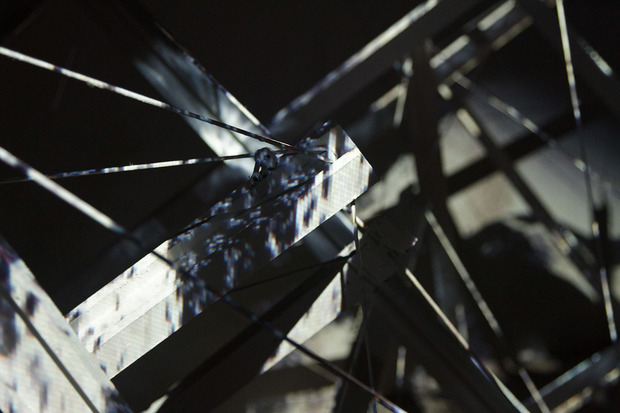
How would you say Ecdysis differs from your past pieces?
I think one of my breakthrough pieces was Chiaroscuro, that I did in the Museum of Contemporary Art in Geneva last year. It was this 20-foot drawing and light sculpture, kind of a three-surface projection.
I think my work has always been about fusing two different forms or two different perspectives, like enhancing the interplay of light and dark with projection mapping and sculptural form.
“There’s something about the magic of a really successful performance. Something about the personal connection of it, the randomness of it.”
It’s moving to be something more immersive. I think a lot of times when you see these installations, they can seem a little bit cold. And as a violinist and pianist, there’s something about the magic of a really successful performance. Something about the personal connection of it, the randomness of it. Coming from an arts and tech background, you don’t see a lot of projects that capture that feeling.
I think there’s a lot to be explored in creating your own tools and being able to fuse these types of tools together. Sometimes I worry that we get stuck into these design patterns of the interface. And I tend to spend too much time thinking about how to get away from that. That’s why my process is incredibly interdisciplinary; I do stuff with music and drawing and software and sculpture, just to try to not get stuck on any mode of creation.
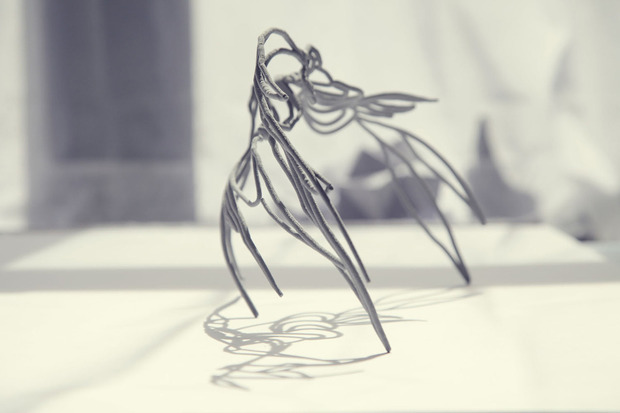
Are there other projects you’re currently working on?
I showed Exuviae first at MIT [Media Lab] last year as a prototype, but I’m looking to develop it further. I’m working with an artist/developer named mr.doob to design a custom digital drawing tool using three.js that can create sculptural form using drawing in digital space. The prototype was done purely freehand with the software in browser and then 3D-printed with a lightweight material called alumide. For future iterations I’ll be experimenting with gold and ceramic. I have a few interested collectors and am interested in sourcing more funding for the project.
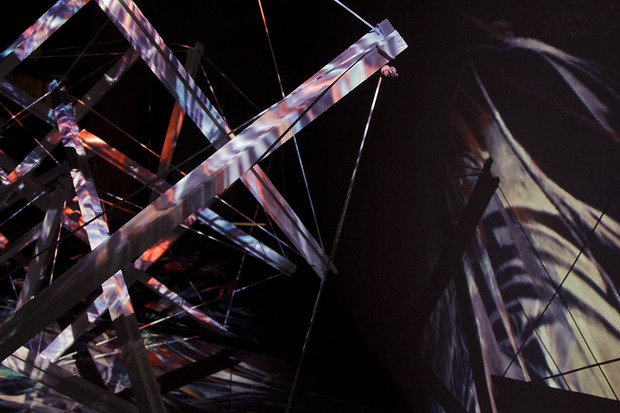
The Ecdysis installation and performance will be shown at Communikey Festival in Boulder, Colorado this Saturday, 12 April 2014. For Ecdysis credits and more information on Chung’s current and past projects, visit her official website.
Portrait courtesy of Laura Wilson, Ecdysis images courtesy of Chris Leung, all other images courtesy of Sougwen Chung












